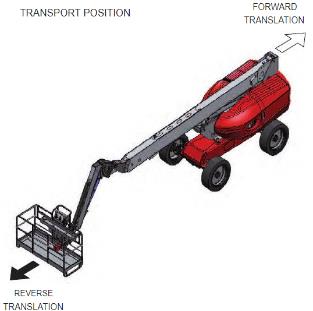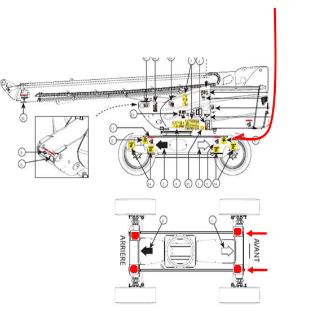Lifting complex loads – offloading third party equipment
What happened?
As it was being lifted off a vessel, a cherry picker (a movable hydraulic crane with a railed platform used to raise or lower personnel) tipped over, causing minor damage to the vessel bulwark.
The incident happened when crew were in the final hour of preparing the vessel for departure from port. A rented cherry picker which had been used on the vessel for maintenance work during the port call, was being offloaded. After connecting the dedicated rigging provided by the supplier, the crane operator came up on the load in preparation for the lift. The cherry picker tilted towards its counterweight and came to rest against the vessel bulwarks causing minor damage. An All Stop was called, with the bridge and captain informed.



Following the incident, a Time Out for Safety (TOFS) with the teams involved was held. An additional Risk Assessment and Toolbox Talk assessed the situation onboard and consulted with representatives from the rental company. The cherry picker was then successfully lifted back to the upright position and returned to the quayside.
What went wrong?
- Inadequate handover, inadequate communication:
- The cherry picker had been lifted on board by vessel personnel who had subsequently crew changed out before the maintenance works were finished;
- The initial lift detail and information was not effectively communicated to the oncoming team;
- When the cherry picker was brought on board, the lift plan took no account of the condition of the unit or the correct rigging required to lift it safely.
- The information in the cherry picker operations manual did not address how to safely lift such a unit;
- The rigging arrangement for the unit created a clash with the lift points and the counterweight. This led the lifting team to consider that the correct set up for the lift required the boom to be placed at a 90° offset therefore removing the clash.
Actions
- Specific to lifting cherry pickers:
- Develop a specific lift plan for cherry pickers. The lift plans should be readily available and refer to specific guidance from the manufacturer’s manual;
- Ensure correct documentation including operations manuals and information relating to safe lifting operations is available from third-party plant and equipment vendors;
- Require dedicated and certified rigging to accompany the rental;
- Discuss this issue with logistics and supply chain personnel and with port agents and suppliers, to safeguard the provision of equipment, information and documentation relating to the hire of plant and equipment.
- Where crew changes may impact operations, plans should be in place to support effective handover of key information such as lift plans;
- Lifting requirements, particularly for complex objects, should be thoroughly understood and confirmed by all persons involved;
- Management and supervisors should continue to support “Stop the Job” with their teams.
IMCA notes that before use of third-party rigging equipment, there should be thorough examination by a competent person.
Members may wish to refer to:
- IMCA HSSE 019 Guidelines for lifting operations
- High potential near miss – storage box dropped from forklift [cause: poor communication; known facts were not communicated to new crew]
- Dropped object fell from crane – Poor communication/lack of awareness/control of work [a finding: work conducted…was not communicated…at shift handover/TBT…crane operator was not made aware that work had been conducted…]
- Rigger sustains injury to left hand [the load moved in an unplanned and unexpected way]
- Dropped object – intermediate bulk container (IBC) [As IBC was moved, the liquid inside was sloshed around (owing to the ‘free surface’ effect) which changed the centre of gravity.]
Safety Event
Published: 19 August 2021
Download: IMCA SF 23/21
IMCA Safety Flashes
Submit a Report
IMCA Safety Flashes summarise key safety matters and incidents, allowing lessons to be more easily learnt for the benefit of all. The effectiveness of the IMCA Safety Flash system depends on Members sharing information and so avoiding repeat incidents. Please consider adding [email protected] to your internal distribution list for safety alerts or manually submitting information on incidents you consider may be relevant. All information is anonymised or sanitised, as appropriate.
IMCA’s store terms and conditions (https://www.imca-int.com/legal-notices/terms/) apply to all downloads from IMCA’s website, including this document.
IMCA makes every effort to ensure the accuracy and reliability of the data contained in the documents it publishes, but IMCA shall not be liable for any guidance and/or recommendation and/or statement herein contained. The information contained in this document does not fulfil or replace any individual’s or Member's legal, regulatory or other duties or obligations in respect of their operations. Individuals and Members remain solely responsible for the safe, lawful and proper conduct of their operations.
